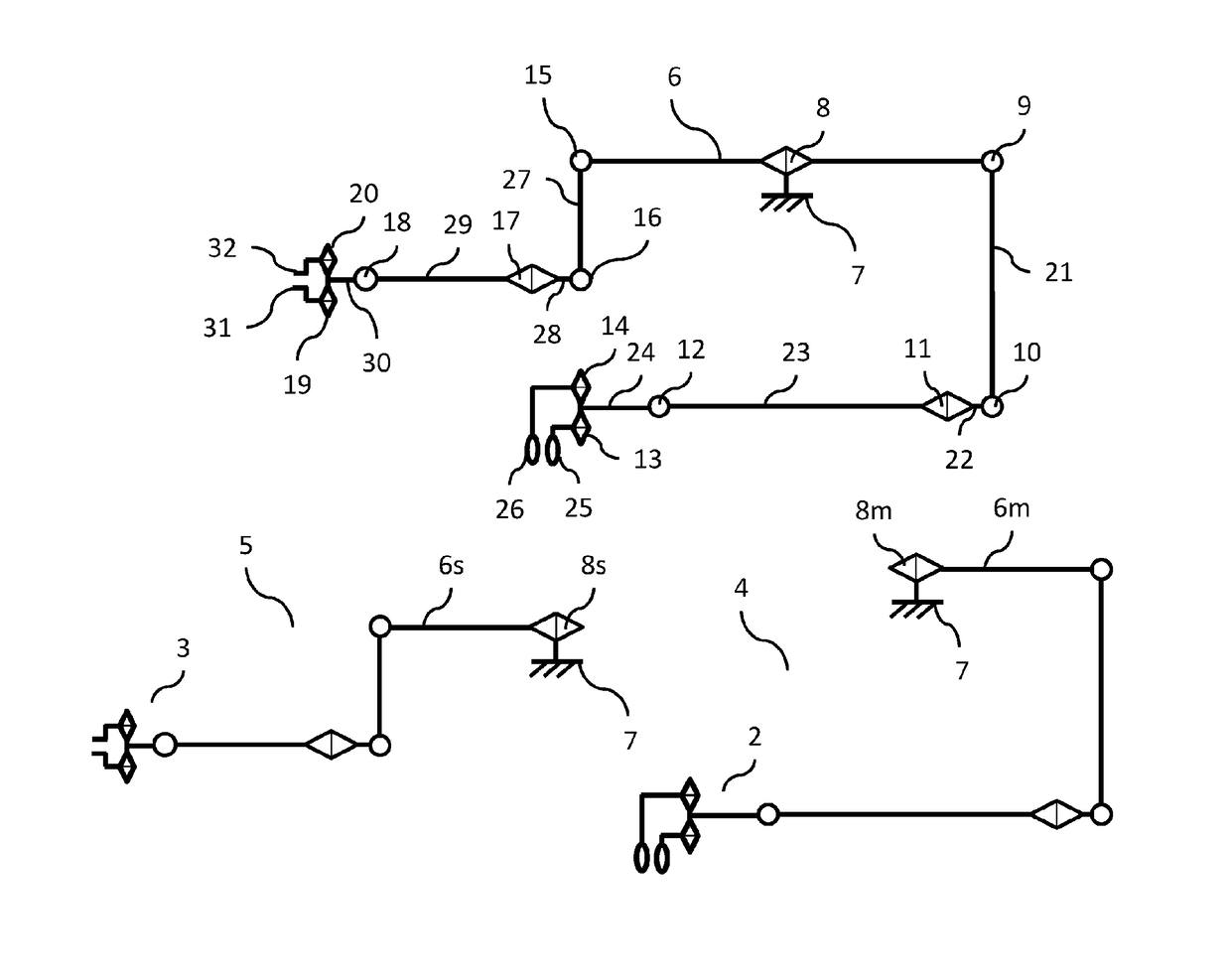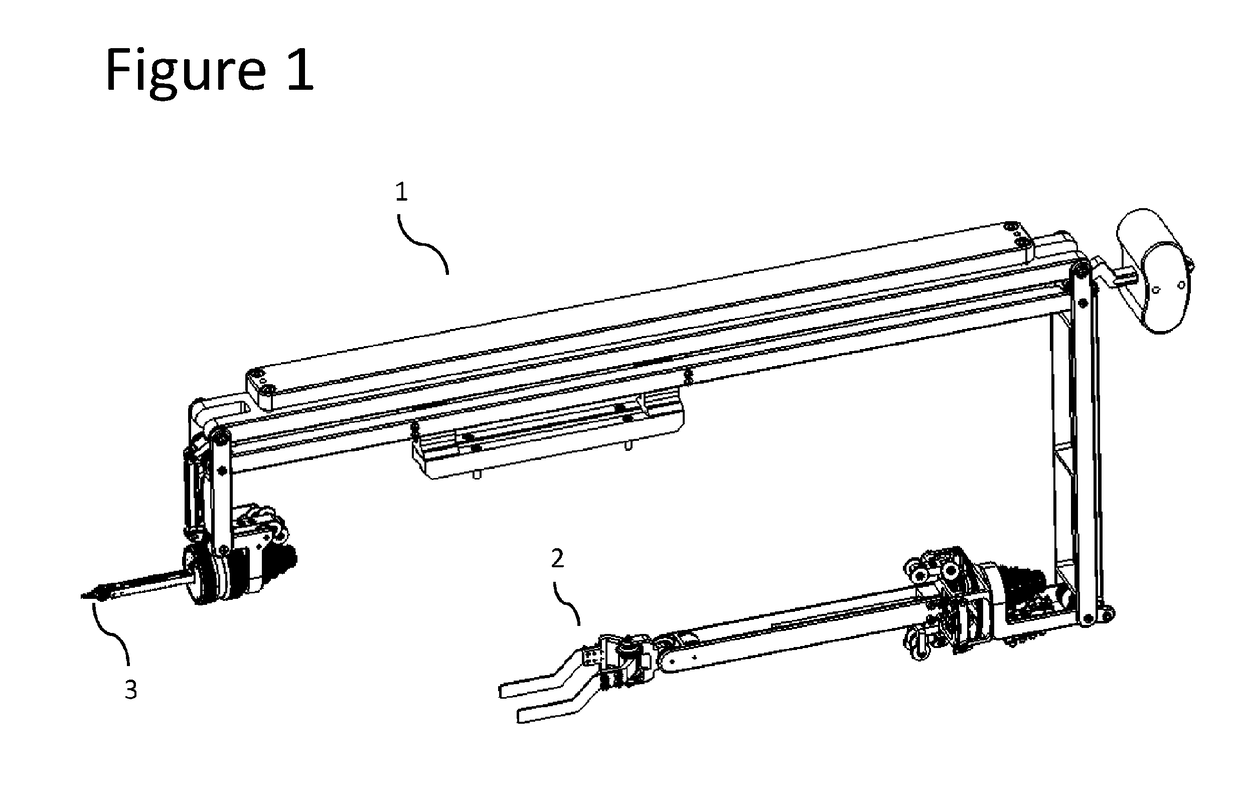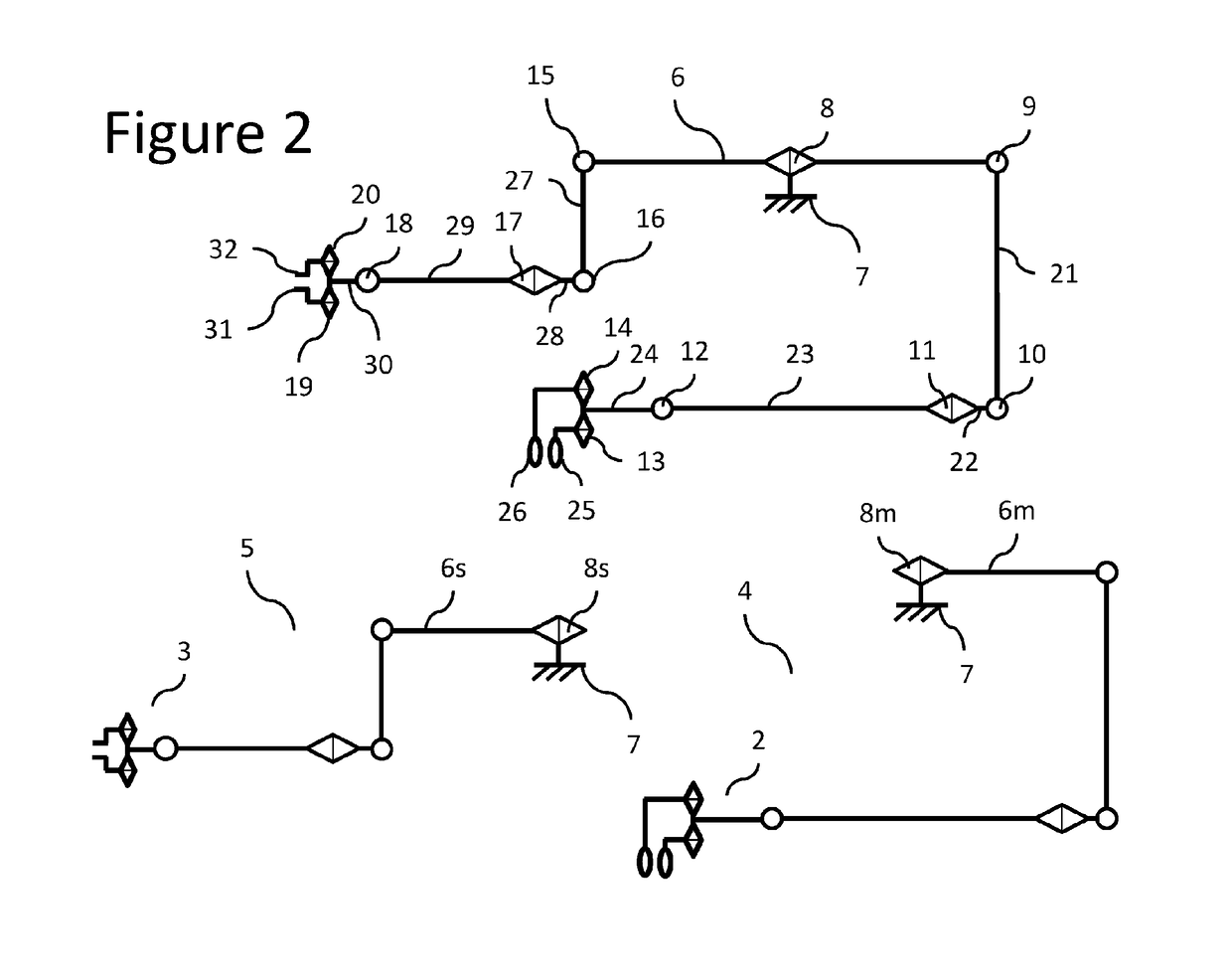Articulated handle for mechanical telemanipulator
a technology of mechanical telemanipulators and handles, which is applied in the field of remote actuation of mechanical systems, can solve the problems of long recovery periods, long recovery periods at the hospital, and substantial blood loss, and achieves ergonomic range of motion and higher gripping for
- Summary
- Abstract
- Description
- Claims
- Application Information
AI Technical Summary
Benefits of technology
Problems solved by technology
Method used
Image
Examples
Embodiment Construction
[0043]The articulated handle 2, according to an embodiment of the present invention, is intended to be used in a mechanical telemanipulator 1, like the one shown in FIG. 1.
[0044]One of the key features of this type of mechanical telemanipulator 1 lies in its master-slave architecture, which enables a natural replication of the user hand movements, on a proximal handle 2, by a distal end-effector 3 on a remote location.
[0045]According to FIG. 2, the mechanical telemanipulator 1 (according to an embodiment of the current invention and the invention disclosed in WO2013014621) may comprise: i) a master manipulator 4 having a corresponding number of master links 21, 22, 23, 24, 25, 26 interconnected by a plurality of master joints 9, 10, 11, 12, 13, 14, a ii) a handle 2 for operating the mechanical telemanipulator 1, connected to the distal end of the master manipulator 4, iii) a slave manipulator 5 having a number of slave links 27, 28, 29, 30, 31, 32 interconnected by a plurality of sl...
PUM
 Login to View More
Login to View More Abstract
Description
Claims
Application Information
 Login to View More
Login to View More - R&D
- Intellectual Property
- Life Sciences
- Materials
- Tech Scout
- Unparalleled Data Quality
- Higher Quality Content
- 60% Fewer Hallucinations
Browse by: Latest US Patents, China's latest patents, Technical Efficacy Thesaurus, Application Domain, Technology Topic, Popular Technical Reports.
© 2025 PatSnap. All rights reserved.Legal|Privacy policy|Modern Slavery Act Transparency Statement|Sitemap|About US| Contact US: help@patsnap.com



